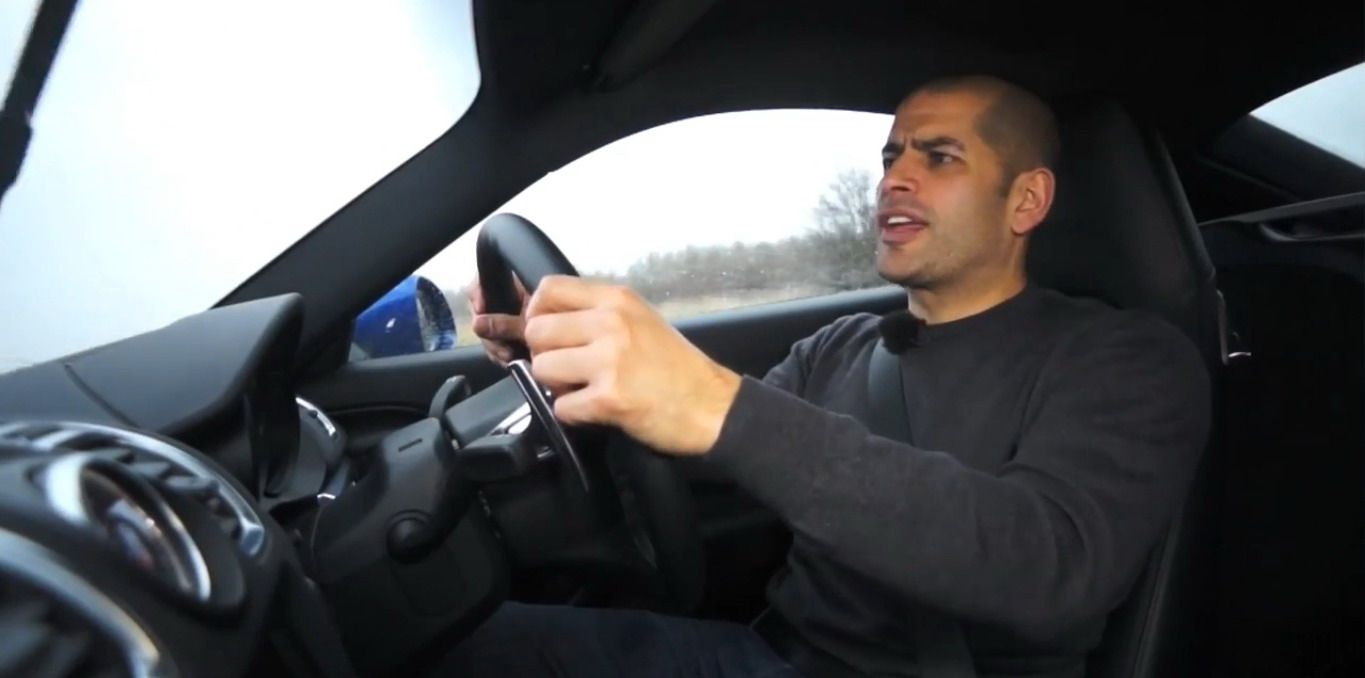It could be argued that the automotive world has a bit of a love-hate relationship with Porsche.->ke1 On the one hand, the sports cars->ke506 from Stuttgart exemplify driving excellence in their respective segments, which is especially true with the Cayman S. Everything on it is world class: the engine is responsive and powerful, the PDK transmission is perfectly geared and changes cogs like lightening, and the chassis punches well above its weight in terms of handling dynamics and at-limit feel. On the other hand, Porsche is a victim of its own success: few chances taken in the course of vehicle evolution means the lineup melts together when considering layout and exterior styling, and its immense popularity makes a Porsche blend into the background on the road. As weird as it may sound, you could say that Porsche has grown stagnant with its brilliance. It’s like a band with one perfect song reiterated into a whole anthology. Instantly recognizable, great to listen to, and terribly predictable. Not that we can blame Porsche; the German automaker has obviously found a formula that works, so why change it?
Alfa Romeo->ke1386 might have an answer with the 4C.->ke3773 Combining a low-weight chassis, exquisite Italian styling, and a mid-mounted, 240-horsepower inline-four cylinder engine, the 4C is the first Alfa to be sold in the U.S. since the 8C->ke1431 in 2008. I think this car is magnificent. It’s minimalistic in design, beautifully rendered, and focuses heavily on driver enjoyment. Plus, it’s not a Porsche.
So then, we have the Cayman, which is a wonderful car exactly like the rest of Porsche’s wonderful cars, and then there’s the 4C, the underdog Italian challenger. Which should you have?
Chris Harris sets out to find the answer with this video.->ke278 We start on partially flooded British roads in the middle of a deluge to sort out how each takes to public byways, followed by some chucking about on a significantly drier road course littered with tight chicanes. Harris is once again up to task, presenting his impressions through analytical discussion that is both technical and emotional. Oh, and he gets completely sideways (obviously).
Click past the jump to read more about the Alfa Romeo 4C and Porsche Cayman.
Alfa Romeo 4C
Heralding from the pages of Alfa Romeo’s racing successes, the 4C employs extensive carbon fiber and aluminum to keep curb weight below a ton. That means the all-aluminum, 1.7-liter, turbocharged motor sitting directly behind the cabin is all that’s needed to propel this car to 60 mph in 4.5 seconds, with a top speed of 160 mph.
The double-wishbone suspension up front and McPherson setup in the rear offer over 1 g of lateral acceleration, which means this little sports car can grip as well. The interior has been stripped of luxuries and amenities found in less driver-centric vehicles, with abundant patches of bare composites presented throughout. There’s no power steering and lots of NVH. Of course, if you were looking for an iPod charger and a few cup holders, you probably weren’t interested in the 4C anyway.
Porsche Cayman S
In essence, the Cayman takes the incredibly successful Boxster formula and adds a roof, creating a vehicle that’s a bit more serious than its convertible sibling. Overall, though, the car is still pretty much the same thing: there’s a top-range 3.4-liter, flat-six cylinder engine, and either a seven-speed PDK automatic or six-speed manual transmission.
The interior is nicely appointed when put next to the cabin of the 4C, with leather, carpets, infotainment, and climate control. The steering, while electronically-assisted, is still quite good, and while heavier than the Alfa Romeo, the Porsche’s suspension handles the extra 900 pounds of curb weight gloriously, inspiring confidence in a variety of road conditions.

